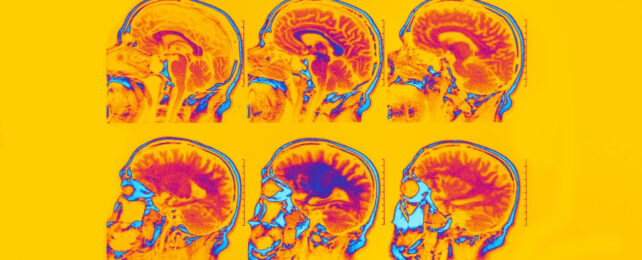In the future, getting help for depression might involve a quick brain scan to find the most effective treatment for you.
An analysis of brain activity during rest and while undertaking specific tasks among a large group of people with depression and anxiety has identified six distinct types of brain activity patterns, symptoms, and responses to treatment.
The team from the US and Australia who conducted the study also determined treatments that are more likely to work for some of these categories. This means doctors could potentially match patients with the best therapies based on how their brains function.
"The dominant 'one-size-fits-all' diagnostic approach in psychiatry leads to cycling through treatment options by trial and error," Stanford University neuroscientist Leonardo Tozzi and colleagues write in their published paper, "which is lengthy, expensive and frustrating, with 30–40 percent of patients not achieving remission after trying one treatment."
The researchers studied 801 mostly unmedicated participants who had been diagnosed with either major depressive disorder, generalized anxiety disorder, panic disorder, social anxiety disorder, obsessive-compulsive disorder, or post-traumatic stress disorder, or a combination thereof. They also included 137 people without the conditions as controls.
Functional MRI (fMRI) brain scans were used to attain 41 activation and connectivity measures for each participant, focussing on six brain circuits known to play a role in depression. Scans were taken when the participants were at rest and then in response to tasks involving cognition and emotion.
Machine learning was used to cluster those with depression and anxiety into six types based on specific brain pathways that are overactive or underactive, relative to each other and the control participants.
"To our knowledge, this is the first time we've been able to demonstrate that depression can be explained by different disruptions to the functioning of the brain," says senior author Leanne Williams, a psychiatrist and behavioral scientist from Stanford University.
The team then randomly assigned 250 participants to receive one of three antidepressants or engage in talk therapy. The antidepressant venlafaxine worked best on one subtype: people whose cognitive brain regions were overactive.
Talk therapy worked better for people who had more activity in parts of the brain linked to depression and problem-solving. Those with low activity in the brain's attention circuit, on the other hand, benefited less from talk therapy, perhaps suggesting they have more to gain from first treating the lower activity with medication.
"To really move the field toward precision psychiatry, we need to identify treatments most likely to be effective for patients and get them on that treatment as soon as possible," public health scientist Jun Ma from the University of Illinois says.
"Having information on their brain function… would help inform more precise treatment and prescriptions for individuals."
In 2023, some of the same team identified a new cognitive biotype of depression, which affects 27 percent of people with major depressive disorder. The cognitive deficits – in attention, memory, and self-control – are often unaffected by serotonin-targeting antidepressants.
And earlier this year, Williams and a colleague used fMRI to identify those with the cognitive biotype, predicting remission with 63 percent accuracy, compared to 36 percent without fMRI. New treatments for this biotype are being explored.
Depression is complex, as are the factors contributing to it. It can take a long time for those with access to treatment to find one that helps, if they ever do. So every step towards a more effective, personalized approach is useful.
"It's very frustrating to be in the field of depression and not have a better alternative to this one-size-fits-all approach," says Williams. "The goal of our work is figuring out how we can get it right the first time."
The research has been published in Nature Medicine.
